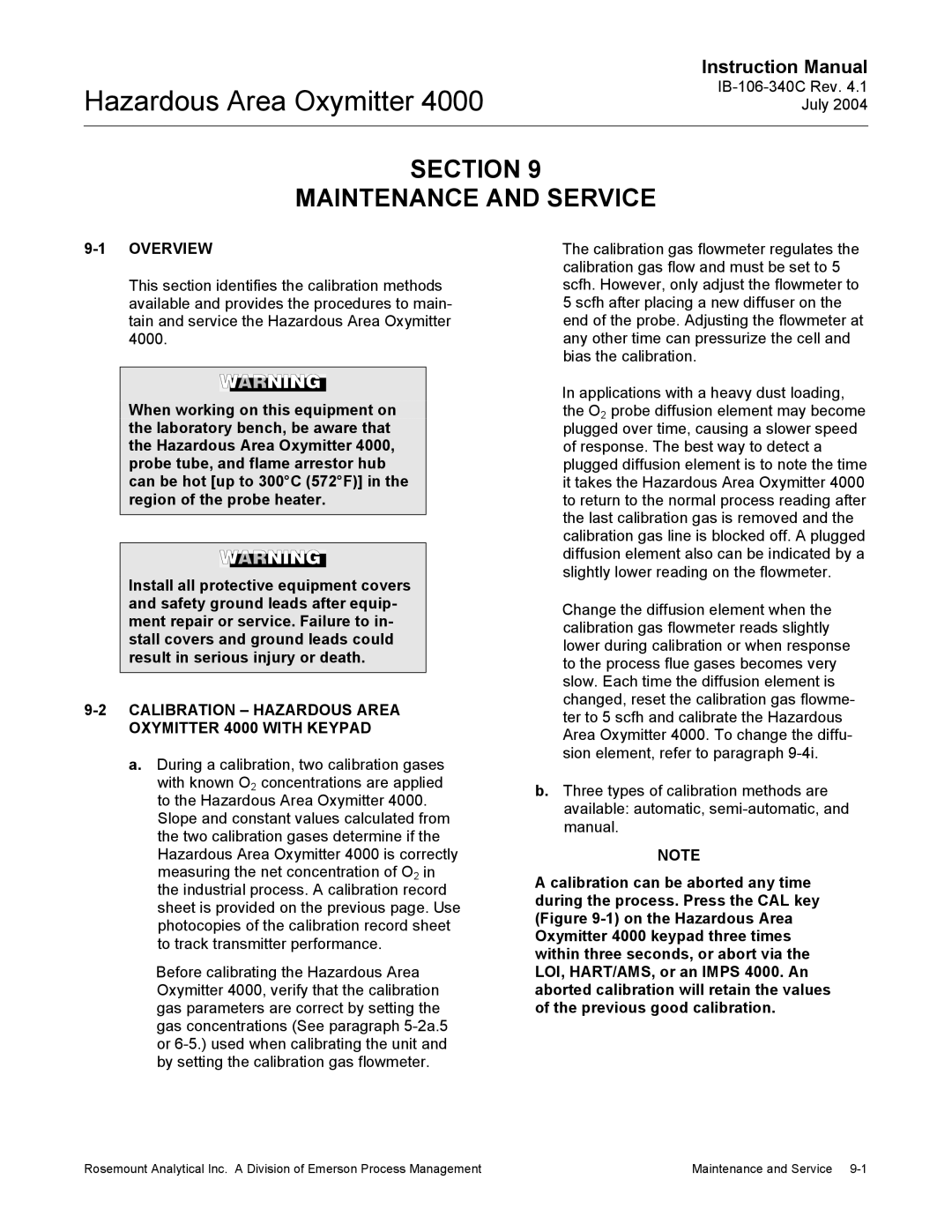
Hazardous Area Oxymitter 4000
Instruction Manual
SECTION 9
MAINTENANCE AND SERVICE
9-1 OVERVIEW
This section identifies the calibration methods available and provides the procedures to main- tain and service the Hazardous Area Oxymitter 4000.
When working on this equipment on the laboratory bench, be aware that the Hazardous Area Oxymitter 4000, probe tube, and flame arrestor hub can be hot [up to 300°C (572°F)] in the region of the probe heater.
Install all protective equipment covers and safety ground leads after equip- ment repair or service. Failure to in- stall covers and ground leads could result in serious injury or death.
9-2 CALIBRATION – HAZARDOUS AREA OXYMITTER 4000 WITH KEYPAD
a.During a calibration, two calibration gases with known O2 concentrations are applied to the Hazardous Area Oxymitter 4000.
Slope and constant values calculated from the two calibration gases determine if the Hazardous Area Oxymitter 4000 is correctly measuring the net concentration of O2 in the industrial process. A calibration record sheet is provided on the previous page. Use photocopies of the calibration record sheet to track transmitter performance.
Before calibrating the Hazardous Area Oxymitter 4000, verify that the calibration gas parameters are correct by setting the gas concentrations (See paragraph
The calibration gas flowmeter regulates the calibration gas flow and must be set to 5 scfh. However, only adjust the flowmeter to 5 scfh after placing a new diffuser on the end of the probe. Adjusting the flowmeter at any other time can pressurize the cell and bias the calibration.
In applications with a heavy dust loading, the O2 probe diffusion element may become plugged over time, causing a slower speed of response. The best way to detect a plugged diffusion element is to note the time it takes the Hazardous Area Oxymitter 4000 to return to the normal process reading after the last calibration gas is removed and the calibration gas line is blocked off. A plugged diffusion element also can be indicated by a slightly lower reading on the flowmeter.
Change the diffusion element when the calibration gas flowmeter reads slightly lower during calibration or when response to the process flue gases becomes very slow. Each time the diffusion element is changed, reset the calibration gas flowme- ter to 5 scfh and calibrate the Hazardous Area Oxymitter 4000. To change the diffu- sion element, refer to paragraph
b.Three types of calibration methods are available: automatic,
NOTE
A calibration can be aborted any time |
| |
during the process. Press the CAL key |
| |
(Figure |
| |
Oxymitter 4000 keypad three times |
| |
within three seconds, or abort via the |
| |
LOI, HART/AMS, or an IMPS 4000. An |
| |
aborted calibration will retain the values | 9 | |
of the previous good calibration. | ||
|
Rosemount Analytical Inc. A Division of Emerson Process Management | Maintenance and Service |
